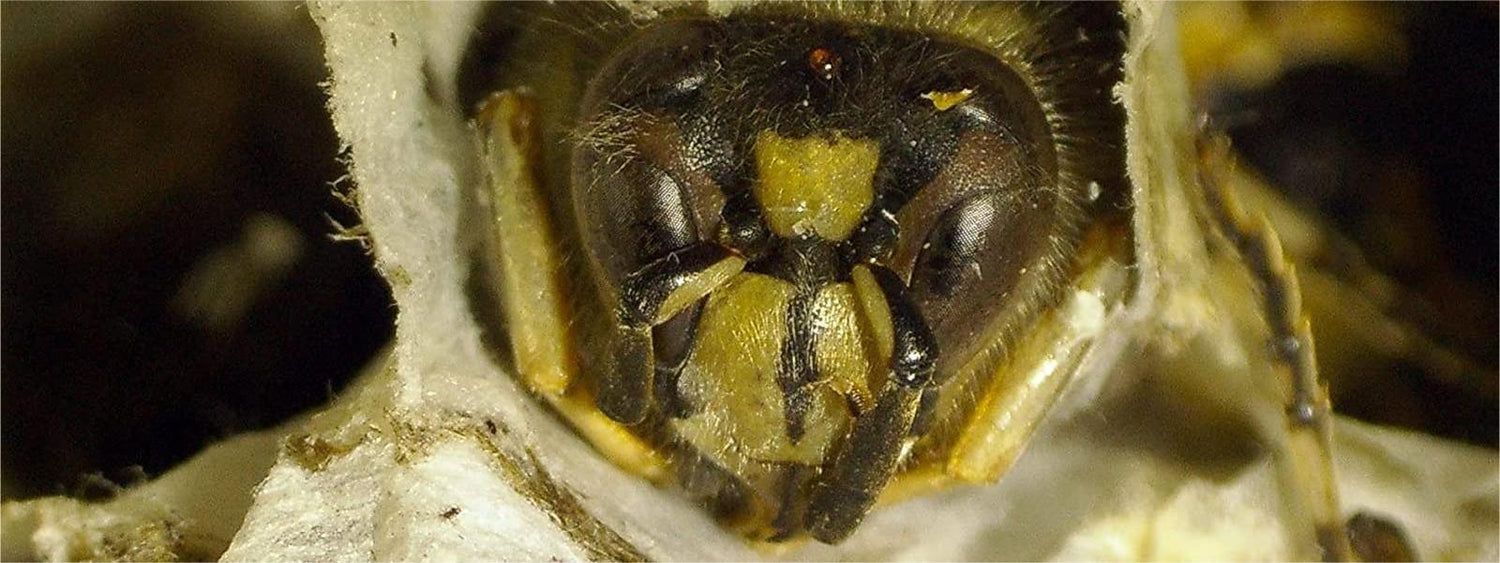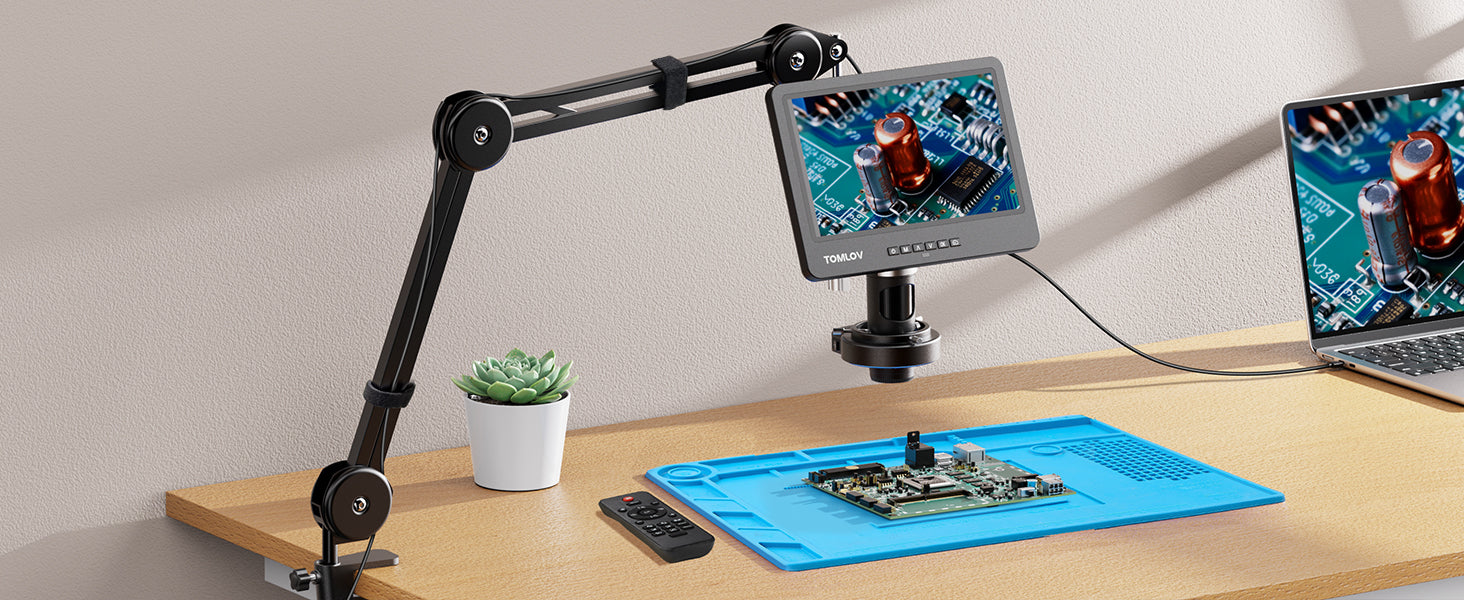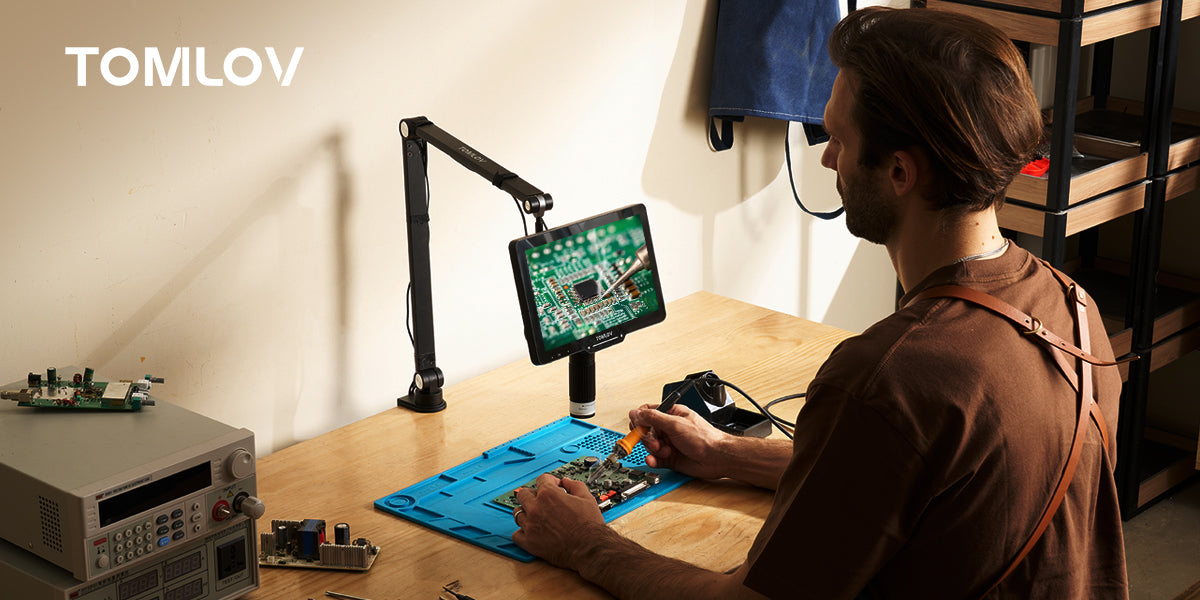Hello, micro-explorers! As digital microscope enthusiasts and dedicated manufacturers, we understand the boundless possibilities that digital microscopes offer in unraveling the mysteries of the microscopic realm. Our user-friendly digital microscopes are designed to streamline your processes and elevate the quality of your work.
Today, we're excited to share a guide on how to use of your digital microscope, enabling you to observe and analyze your samples with greater depth and clarity.

Here Are The General Steps To Use A Microscope:
Know your microscope
Before using the microscope, make sure you understand its various parts and their functions. Read the manufacturer’s manual instructions and ask an experienced user or contact CS for support to guide you. That will make your exploration easier and more enjoyable.
Prepare the work area and sample
Before using a digital microscope, make sure your work area is clean and tidy. Samples should be small, the area should be magnified infinitely. If you look at glass slides, place the sample on a glass slide and transparent to allow light to pass through them. A moderately bright environment is also essential to avoid reflections and other effects.
Adjust the Light Source:
Turn on the light source and adjust the intensity of the light to a suitable level. If your microscope has a diaphragm or extra light sources, adjust it to control the amount of light entering the microscope.
Set appropriate magnification
Digital microscopes often come with different magnification options. Choose the objective lens with the appropriate magnification for your sample. Please start with the lowest magnification and then gradually increase it as needed. This will help you see every tiny feature more clearly.
Focus the Microscope:
Look through the display screen and adjust the focus using the focus knobs until the sample comes into sharp focus. Always use the coarse focus knob when you first start focusing and then use the fine focus knob slowly for fine adjustments.
Moving samples:
Adjust the sample’s position on the base until the area of interest is in the center of the field of view. This is a critical step in understanding the details of your sample.
Observe the Sample:
Once you have the sample in focus and centered, you can start observing it. Use the digital microscope's built-in camera to take photos or record videos at any time to record your observations. This not only helps share findings but also serves as a reference for future comparisons.
Adjust the Image:
If the image is too bright or too dark, adjust the light intensity or the diaphragm or iris. If the image is too blurry or out of focus, adjust the focus using the fine focus knob.
Cleaning up
After you have finished using the microscope, clean the lenses with a lens cleaning solution and a soft, lint-free cloth. Turn off the light source, wrap the cord neatly, and store the microscope in a safe dry place.
By following these steps, you will be able to better utilize your digital microscope to observe and analyze your sample. We look forward to you exploring more exciting information about digital microscope on our website and exploring the wonders of the tiny world together! TOMLOV is committed to providing you with the highest quality microscopes to enhance your experience! Happy exploring!





Leave a comment
All comments are moderated before being published.
This site is protected by hCaptcha and the hCaptcha Privacy Policy and Terms of Service apply.